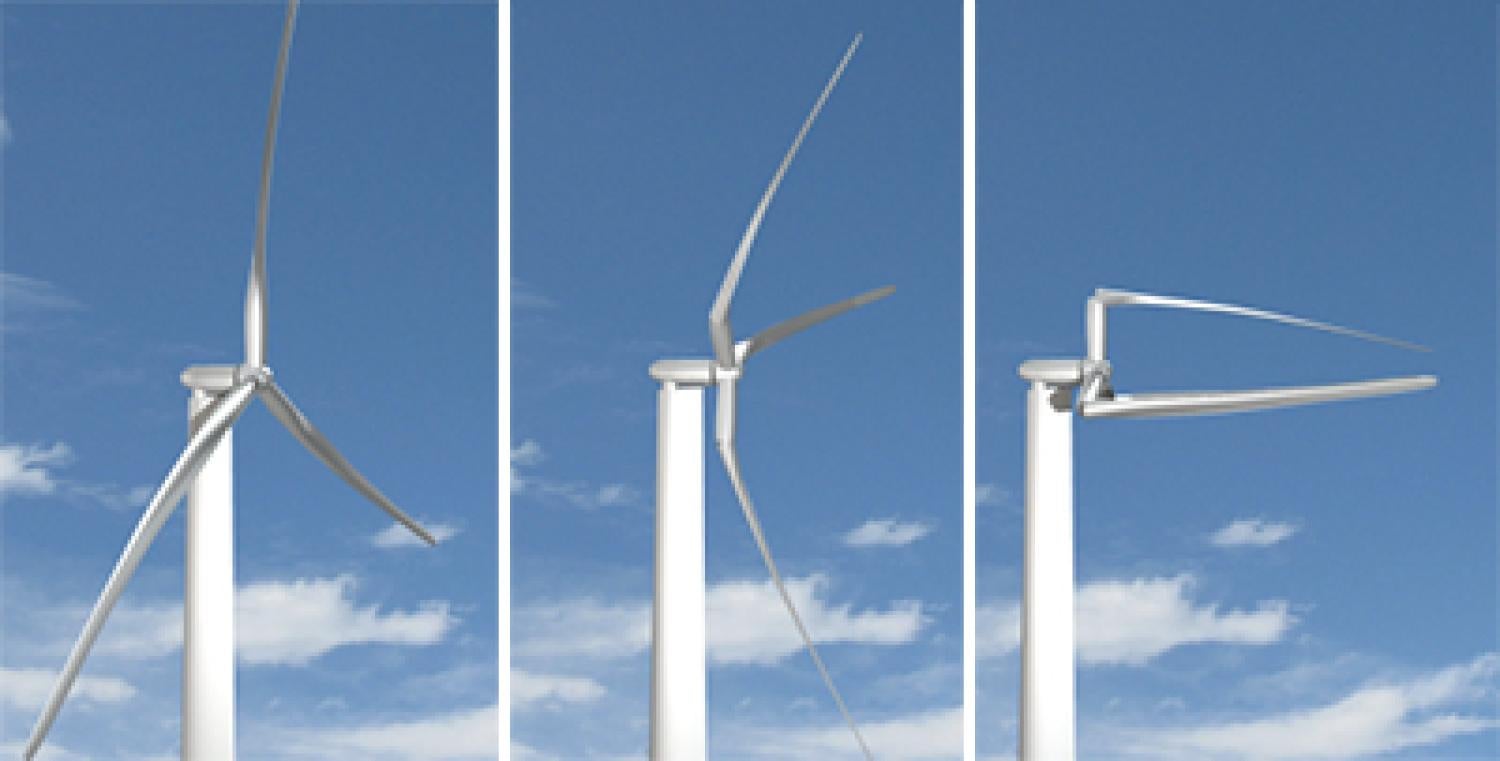Pao's 'morphing' wind turbine inspired by nature

Three years ago, Professor Lucy Pao and her colleagues responded to a call for proposals from the Advanced Research Projects Agency-Energy (ARPA-E) with a plan for a morphing wind turbine. But they didn't make the cut, she thinks, because their proposal wasn't "disruptive" enough.
So they went bigger.
This time, ARPA-E funded their proposal to create a 50-megawatt downwind turbine with 200-meter segmented blades, the first of its scale to be designed. The "morphing" design is inspired by nature - the blades bend and contract like palm trees, making them ideal for offshore use, where turbines have to withstand hurricanes.
Pao explained that segmented blades help to overcome some of the limitations associated with making larger turbine blades, which are currently manufactured and transported in one piece. Today, the largest commercially available blade is 80 meters.
"Segmented blades help on the manufacturing side because you don't have to go to larger foundries," Pao said, adding that since segmented, downwind blades can align with some of the forces acting on them, they have to withstand lower forces overall. Therefore, they do not need to be made as stiff, which means less material is necessary to make them.
Pao and her former PhD student Kathryn Johnson, now an associate professor at the Colorado School of Mines, will be working on the control systems for the turbine.
"We will create the controllers to adjust the blade pitch angles and generator torque levels to mitigate structural loading and maximize power capture," Pao said.
The group will start from a 13.2-megawatt design, the largest turbine studied thus far in a previous project led by other members of the new 50-MW rotor project, and compare it to the performance of their new downwind segmented morphing rotor concept. As a hardware demonstration, they will work with a blade manufacturing company to build a scaled 40-meter downwind rotor with segmented blades, which will be field tested at the National Renewable Energy Lab (NREL) site outside of Boulder in the final year of the project. If everything goes well, larger-scale demonstrations will be planned in follow-up projects.
With the Department of Energy's Wind Vision Report calling for 20 percent penetration of wind energy into the national grid by 2030, the team and ARPA-E are excited for the project's potential for offshore wind energy.
"ARPA-E already wants us to start thinking about how we can take the next step with this and commercialize it," Pao said, adding that the design could encourage more companies to start investing in offshore wind energy. "If we can effectively demonstrate the stowing of the blades, that will instill more confidence in the offshore capabilities."
Check out a video of the Segmented Ultralight Morphing Rotor at bit.ly/morphing-wind-turbine. Pao and Johnson will be working with colleagues from the University of Virginia, University of Illinois, Sandia National Laboratories and NREL.

